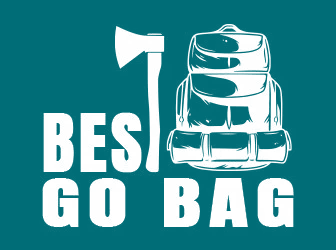There are two good times to forage for food.
One is now, in order to collect food items you could use both now and during an emergency situation. The other is when you actually need those items due to a crisis.
Regardless of when you do it, you’ll need to know how. And that’s what today’s communication is all about.
This is “Foraging 101,” and I’ll be giving you a test later. Not really, but Mother Nature might test you some day, so it’s best to be prepared.
Knowledge is power
The first thing you want to do is learn as much about foraging as possible. Hopefully this information today will help. But you should also consult online articles and books about the subject.
The most important things you’ll learn from these articles and books is which plants are safe to eat and which are poisonous to humans. As our friend and former Navy SEAL Cade Courtley says, “Knowing what you can and cannot eat could save your life.”
Look for field guides with detailed photos and descriptions so you’ll be able to identify the plants you are considering gathering and eating.
Among books you may want to check out are The Forager’s Harvest by Samuel Thayer, Food for Free by Richard Maybe, Identifying and Harvesting Edible and Plants in Wild (and Not So Wild) Places by Steve Brill and Idiot’s Guide to Foraging by Mark Vonderbruggen.
You might also want to keep a journal as you’re foraging, listing which items you’ve chosen to gather (and which ones you haven’t) and why. Try to list both the common names (such as hemlock) as well as the Latin names (such as Conium maculatum and Tsuga canadensis).
Where two or more are gathered…
Finding a foraging partner or two will also make the activity more enjoyable. I’m guessing you have at least one family member, friend or neighbor interested in preparing for the future.
Each of you will have a different skill set and knowledge base, so you can help each other out along the way.
Some of them might be able to guide you toward places where the gathering is good. And where it’s not. Or vice versa. Either way you’ll be gathering food that is healthier for you than what you’ll buy in stores. Not to mention free.
Eventually you’ll be able to get to the point where you can identify plants not only by sight, but perhaps by smell and feel as well. You’ll also learn that some plants are often found near others. For example, yellow dock and pokeweed are frequently located in the same area.
Once you’ve gathered items you want to cook and eat, swap recipes with your partners and maybe even enjoy a meal together. Many wild foods are much richer in essential vitamins and minerals than what you can purchase.
Start slowly and progress
Don’t try to do too much too soon. You want these foraging experiences to leave a good taste in your mouth – figuratively and literally – and that might not happen if you overdo it and come back exhausted and sore.
Start with the easy-to-find foods such as dandelions, berries and sagebrush. They’re easy to recognize.
Get to know the area where you’re foraging with several trips there before staking out new territory. There are many native edible plants in most areas. You’ll learn that certain parts of some plants are fine for eating, but others are not.
Don’t forage for plants too close to busy roads. They may absorb lead and other toxins. Also avoid areas where pesticides have been sprayed. Try to learn the water source for the plants you forage. Stay away from plants too close to standing water.
You’ll probably find great places to forage near your home. As the seasons eventually change, you’ll see new foods you didn’t see before. But remember not to uproot plants. In some areas this is illegal. Take only the flowers and leaves.
Freeze-Dried Berry Super Pack
Foraging is fun. Think of it as a combination of hiking and gardening. Get good at it and you’ll be able to live off the land.
Earlier I mentioned berries. They are a great source of tasty nutrition. Now, picking berries can be a lot of fun. But if you also want a one-stop shopping experience for berries, here it is.
It’s the Freeze-Dried Berry Super Pack from 4Pariots. It gives you 96 servings of freeze-dried blueberries and strawberries (48 servings of each) designed to last 25 years.
Packed in triple layer Mylar pouches, the freshness and flavor stays in. Eat them right out of the bag or combine them in your favorite recipes. To cook, just boil, simmer and serve.


